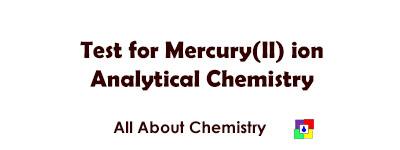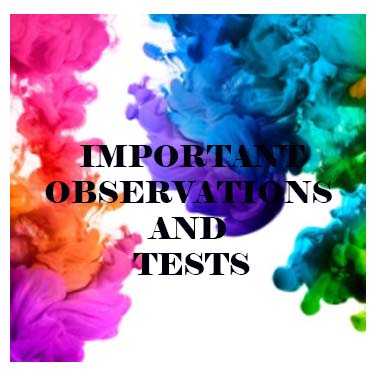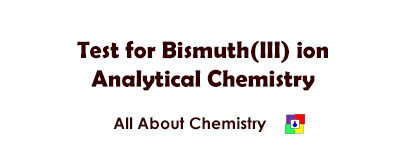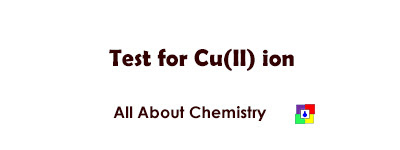1. Hydrogen Sulphide test:
In the presence of dilute HCl, initially a white ppt is formed. When further amount of hydrogen sulphide is added, a black ppt is formed.
3Hg2+ + 2Cl– + 2H2S → Hg3S2Cl2↓ + 4H+
Hg3S2Cl2↓ + H2S → 3HgS↓ + 2H+ + 2Cl–
2. Ammonia test:
When treated with ammonium hydroxide solution, a white ppt is formed.
2Hg2+ + NO3– + 4NH3 + H2O → HgO.Hg(NH2)NO3↓ + 3NH4+
3. Sodium hydroxide test:
When small amount of sodium hydroxide is added, a yellow ppt is obtained.(If exact stoichiometric amount is not used, brownish-red ppt is obtained)
Hg2+ + 2OH– →HgO↓ + H2O
4. Potassium iodide test:
When potassium iodide is slowly added a red ppt is obtained. The ppt dissolves in excess to form tetraiodomercurate(II) ion.
Hg2+ + 2I– → HgI2↓
HgI2 + 2I– → [HgI4]2-
5. Tin(II) chloride test:
When moderate amount of tin(II) chloride is added, a white silky ppt is formed.
2Hg2+ + Sn2+ + 2Cl– → Hg2Cl2↓ + Sn4+
If excess reagent is added, black ppt of mercury is forme
Hg2Cl2 + Sn2+ → 2Hg↓ + Sn4+ + 2Cl–
6. Diencuprato(II) sulphate test:
When the sample solution is treated with di(ethylenediamine)cuprato(II) sulphate reagent in present of KI, a dark blue-violet ppt is formed.
Hg2+ + 4I– → [HgI4]2-
[Cu(en)2]2+ + [HgI4]2- → [Cu(en)2][HgI4]↓
7. Cobalt(II) thiocyanate test:
To the sample solution Cobalt(II) thiocyanate solution is added, when a deep-blue crystalline ppt is obtained.
Hg2+ + Co2+ + 4SCN– → Co[Hg(SCN)4]↓















